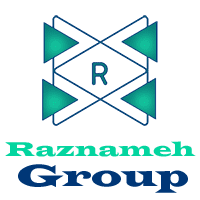Within the fast-moving environment of recruitment, start-ups are moving more and more toward the implementation of effective ATSs. While such systems will be looked at in some as a trend, it is actually a need based on strategy which comes from various factors. In order to explore why an ATS system lies at the very heart of modern recruitment start-ups, there is a need to look in-depth at the challenges facing such a company, the benefits reaped through using an ATS system, and general trend forces at work within the recruitment industry.
Historical Background and Evolution of ATS
Application Tracking Systems have indeed covered a considerable distance from their very initiation. In the early days, recruitment used to take place manually. Hefty reliance was on paper resumes and personal networks. The advent of digital technology in the late 20th century brought the first wave of ATS, primarily as databases to store candidate information. Over the years, these systems developed into incorporating a multitude of high-end features like resume parsing, automated posting, and data analytics. Modern-day ATS are AI-driven, making the process of recruitment easier and more productive than ever before.
Challenges Faced by Recruitment Start-Ups
Here, recruitment start-ups participate in a highly competitive market wherein the speed and quality of hiring can either break or make one’s success. The following section has enlisted some of the major challenges faced by recruitment start-ups:
- Huge Volume of Applications: With the imposition of online job portals and social media, job postings attract a lot of applications. Not only is there wasting of time associated with manual processing, but it also leads to errors and biases. Here is an example: a start-up posts a job opening on LinkedIn, and in just one week, it gets more than 500 applications. It would be quite impractical to manually review each resume; probably, the qualified ones will be overlooked simply because of the volume.
- Quality of Hire: It’s all about getting the cream of talent rising to the top from a large pool. Poor hiring is reputably and productively expensively damaging for any start-up.
- Speed and Efficiency: The start-ups must be agile and quick about hiring to capture good talent before the competition is quicker. When recruitment takes so much time, an opportunity is missed and that does affect the overall growth of the company. A start-up loses a top candidate to a competitor because their recruitment process took too long, was frustrating, and the candidate accepted another offer.
- Compliance and Data Management: The process of recruitment involves extensive personal data that needs to be processed, stored, and transferred in compliance with the concerned data protection laws. In consequence, startups are in need of systems that can manage and protect that data efficiently.
The Role of ATS in Addressing These Challenges
It is the candidate track record collection, gathering of information, sorting, and management that an applicant tracking system is supposed to achieve in order to smoothen the recruitment flow. Here’s how an efficient ATS helps the recruitment start-ups overcome their challenges:
- Automated Administrative Tasks: Most of the repetitive tasks associated with recruitment, such as posting jobs, screening resumes, and scheduling interviews, are automated by ATS systems. This frees the recruiters to focus on more strategic activities like engaging with prospects and cultural fit assessments. It automatically posts job openings across the many job boards and a number of social media instances, thereby spreading job postings without any additional effort from the recruiters’ side.
- Improved Candidate Matching: Advanced ATS systems will then make use of algorithms and artificial intelligence to match candidates with requisites of the job based on their skills, experience, and other criteria specified. This makes the chances of finding a perfect man for the job highly likely and very fast. An ATS filters applications to highlight candidates whose resumes closely match the job description, reducing the time recruiters spend sifting through unsuitable applications.
- Improved Candidate Experience: This changes with a user-friendly ATS, improving candidate experience through timely updates, ease of application, and clarity in communication. After all, the candidate proposition is essential to a strong employer brand. The candidates get automatic email updates through the ATS regarding their position on the application, so that they are not left in the dark and interest in the position is maintained.
- Data-driven decision-making: OEM or ATS systems are designed with powerful analytics and reporting tools, which give recruiters an easier way to drive decisions. Startups can track key metrics like time-to-hire, source of hire, and where the candidates are dropping off, thus fine-tuning their strategies even more. For example, a startup that tracks its analytics through an ATS realizes that most of their quality candidates come from specific job boards, therefore, being able to plan where to put their resources better.
- Compliance and Security: Next-generation ATS systems are designed with robust security features to allow for the safe storage of candidate data and compliance in conformity with regulations like GDPR, thus reducing potential legal liabilities from data breaches. The ATS makes sure that all the data of candidates are encrypted and access to it is restricted to authorized personnel only, thereby maintaining compliance with data protection laws.
Technological Innovations in ATS
The recent innovations introduced by artificial intelligence and machine learning have transformed the ATS industry. They provide improvement to predictive analytics, more accuracy in candidate matching, and help raise red flags within applications. Machine learning algorithms parse loads of data for providing even more profound insights for recruiters, like estimating how much success a certain candidate would bring on the basis of past hiring data.
Trends Influencing the Adoption of ATS Systems
A lot of broader trends in the recruiting space force the adoption of ATS systems for start-ups, including:
- Digital Transformation: The move toward digital processes across all business areas that has been accelerated as a result of the COVID-19 pandemic further underlined the need for effective, technology-driven solutions in recruitment. This puts start-ups at the forefront of this change in their quest to derive competitive advantage through technology.
- Remote Work and Global Talent Pools: With rising remote work, a few start-ups can gain talent pools from across the globe. Handling applications across geographies and running the hiring process smoothly requires an ATS system. An ATS will help a start-up manage applications from candidates based probably in completely different time zones, schedule interviews at mutually convenient times, and keep lines of communication smooth.
- Focus on Diversity and Inclusion: The workplace is increasingly being driven toward greater importance to diversity and inclusion. In that respect, an applicant tracking system will rid your hiring of unconscious bias by using standardized criteria for the evaluation of applicants, while also providing options for anonymized screening. An applicant tracking system anonymizes resumes during the preliminary process for screening; this way, candidates are reviewed based on their qualifications and work experience, not by identifiable characteristics.
- Gig Economy and Contingent Workforce: The gig economy and working with contingent workers are gathering force. An ATS will efficiently manage all types of employment arrangements that a start-up may adopt in keeping up with changing workforce trends since it keeps tracking and management of freelance and contract workers in perfect order.
In-depth Analysis of ATS Features
The latest generation of ATS systems was added with numerous features in order to enforce each part of the hire cycle. Major features include:
- Resume Parsing: This feature extracts information from the resumes, categorizes it, and then finally stores the same in structured format. None of this involves any manual data entry; hence, time is saved with reduced errors. A startup recruiter frontline uses Resume Parsing to sift through hundreds of applications very fast to identify the most relevant candidates. This is done within a fraction of the time taken by the manual process.
- Automated Interview Scheduling: The systems have been integrated with calendar apps to make communication back-and-forth between the interviewer and the candidate while getting a final appropriate time slot for the interview easy. It automates interview scheduling once a candidate and an interviewer are available, sending out calendar invitations and reminders on both ends.
- Communication Tools: Communication tools as part of an ATS system enable recruiters to communicate with different candidates directly in the system. This ensures that updates are timely and the communication is clear. For example, a recruiter would be able to send out customized email templates from the ATS to candidates at various stages, thereby driving consistent and professional communication.
- Customizable Workflows: Recruitment workflows in a start-up can be tailored to its needs. In this way, one derives a more adaptable and flexible process of hiring. A start-up customizes its ATS workflow by adding more interview stages for senior positions, thus ensuring thorough evaluation without disrupting the process of standard hiring for other roles.
Challenges and Limitations of ATS
While ATS systems offer numerous benefits, they are not without their challenges. Common limitations include:
- Over-reliance on Automation: Excessive reliance on automated processes can lead to overlooking potential candidates who do not meet specific algorithmic criteria but possess valuable skills or experiences. A highly qualified candidate is overlooked because their resume format doesn’t align with the ATS’s parsing capabilities, missing out on a potentially great hire.
- Initial Setup Costs: Implementing an ATS system can involve significant initial costs, including software purchase, training, and integration with existing systems. A start-up hesitates to invest in an ATS due to budget constraints, delaying their ability to streamline their hiring process.
- Learning Curve: Recruiters and hiring managers may face a learning curve when adapting to a new ATS, which can temporarily slow down the hiring process. A start-up’s recruitment team takes longer to fill positions during the initial months of ATS implementation due to the time needed to become proficient with the new system.
Best Practices for Implementing ATS
The following best practices can make an ATS highly effective for any start-up looking to implement one for successful deployment:
- Select the right ATS: Determine an ATS that would suit the size of one’s company, the kind of industry, or any special recruitment needs. A small start-up chooses a scalable ATS that might grow with their company to avoid changing systems in the future.
- Plan for Smooth Transition: Formulate an implementation plan with detailed timelines, resource allocations, and milestones. A start-up plans for phase-wise roll-out of the ATS—one departmental pilot program, followed by full implementation across the company.
- Train Your Team: This provides full training to recruiters and hiring managers for their ease in being comfortable with the use of the new system. The start-up conducts several rounds of training and makes available resources such as user manuals and video tutorials that will help them use the system to the best of their ability.
- Continuously Evaluate and Optimize: review performance of the ATS on a regular basis and elicit feedback from the users to make adjustments and improvements. A start-up does a quarterly review of their ATS performance, getting feedback from recruiters on how the tools can be improved upon and hence update their process.
Future Trends and Predictions
Looking Ahead, a number of trends shape the future of ATS systems. Here’s what the future ATS system will most probably look like as we move ahead:
- Integration into other HR systems: this means that next-generation ATS systems will be more deeply integrated into other HR platforms as one solution on which to have the entire lifecycle of an employee managed. Proper integration of an ATS into an HRIS system breaks down specific barriers to a smooth onboarding process with continuous performance tracking.
- Advanced AI and Machine Learning: Further developed AI and machine learning will also raise the accuracy and efficiency of ATS systems, bringing in more perceptive analytics and prediction abilities. Through machine learning, an ATS can predict candidate success based on historical hiring data and project those results to the current pool of candidates, thereby aiding recruiters in making more informed decisions.
- Mobile Optimization: As mobile job searching increases, ATS systems would have to deliver rich mobile experiences to both candidates and recruiters. On the candidate side, end-to-end application processes can be done on their smartphones, while recruiters can also manage pipelines and communicate with candidates through mobile applications.
- Candidate Engagement at the Front: The ATS systems of the future would be more focused toward candidate engagement and provide the relevant tools of personalization, communication, and relationship management. Advanced follow-up and engagement features enabled in an ATS system will drive candidates to remain interested and updated through the hiring process.
- Ethical AI, bias mitigation: With growing involvement of AI in recruitment, fairness and transparency in algorithmic decision-making will be at the pinnacle. An ATS has to contain features to audit and calibrate algorithms against bias, to thereby provide an unbiased hiring process for candidates.
Strategic Recommendations
Attention by recruitment start-ups toward efficient ATS systems is therefore driven by a blend of industry challenges, technological advancement, and broader market trends. These systems come with huge benefits that range from automating administrative tasks to improved candidate matching, making the general recruitment process better. As the recruitment space continues changing, one aspect will be very critical: how ATS systems can be effectively used by start-ups to attract top talent, hire, and then retain them. It is possible for a recruitment start-up to remain focused on its set growth and success goals, and still thrive using the latest tools at its disposal in today’s highly competitive market.

Mohsen Niknam
Sales and Marketing
Raznameh Group



